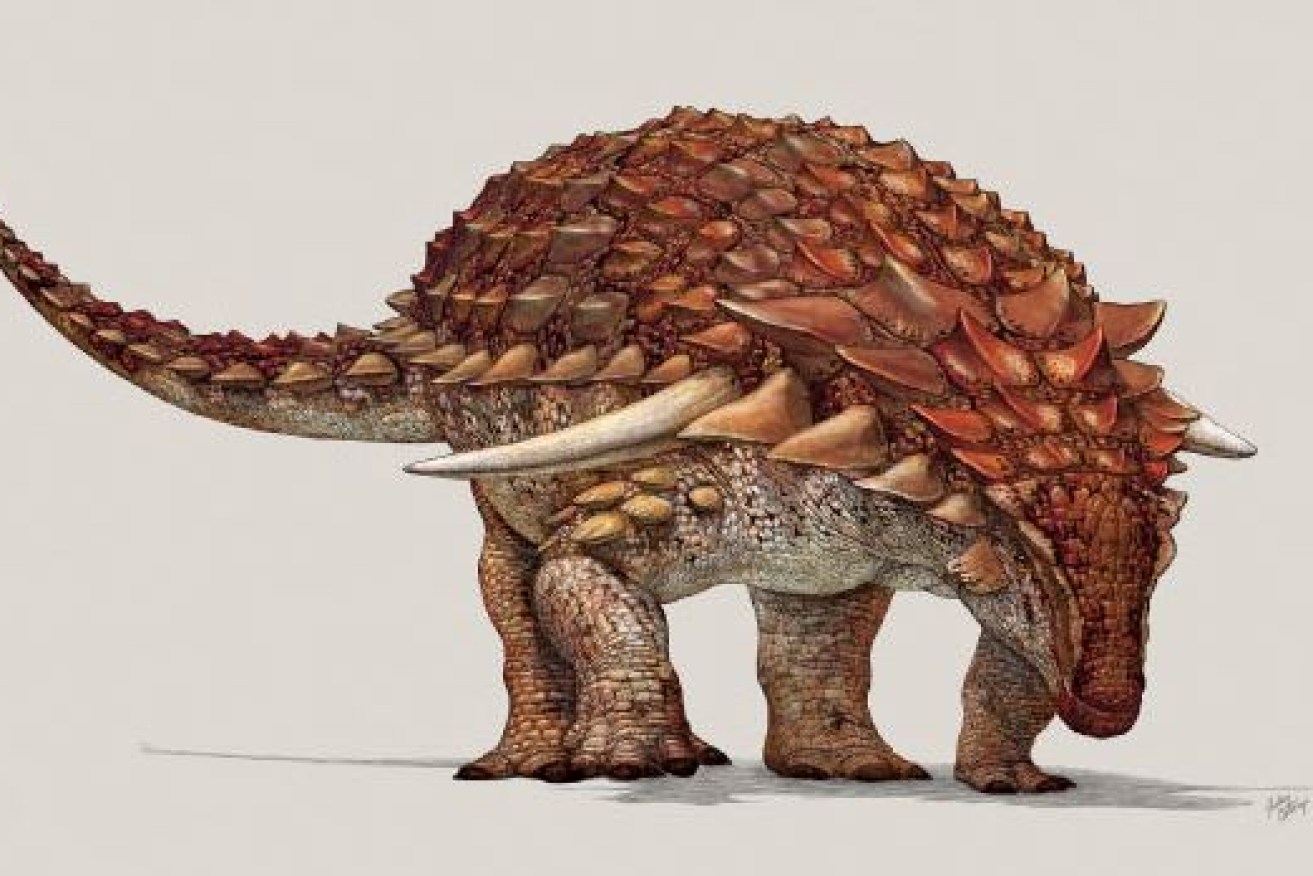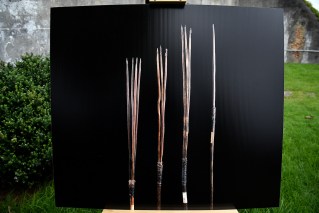Meet borealopelta mitchelli, ‘the Mona Lisa of dinosaurs’

The fossil was so complete, paleontologists were even able to determine the reddish colour of its spikes and camouflage. Photo: Royal Tyrrell Museum
A heavily armoured dinosaur used camouflage to hide from predators despite being built like a tank, scientists say.
Fossilised remains of the creature found in a Canadian mine are so well preserved experts have been able to determine the colour of its scaly skin.
Borealopelta markmitchelli, which lived 110 million years ago in the Cretaceous period, was 5.5m long and weighed a hefty 1.3 tonnes.
Chemical analysis showed the dinosaur would have had reddish-brown, knobbly skin and countershading – a common form of camouflage seen in animals with dark backs and lighter undersides.
“Strong predation on a massive, heavily armoured dinosaur illustrates just how dangerous the dinosaur predators of the Cretaceous must have been,” said lead researcher Dr Caleb Brown of the Royal Tyrrell Museum of Palaeontology in Alberta.
A machine operator at the Suncor Millennium oil sand mine in northern Alberta stumbled on the fossil in 2011.
Experts from the Royal Tyrrell Museum took more than five years to remove the surrounding rock and reveal one of the best-preserved dinosaur specimens ever uncovered.

Paleontologist Mark Mitchell figures he spent 7000 hours liberating the fossil from the rock that encased it.
The creature, from a family of armoured beasts known as “nodosaurs”, was named after museum technician Mark Mitchell, who spent more than 7000 hours on the painstaking work.
“This nodosaur is truly remarkable in that it is completely covered in preserved scaly skin, yet is also preserved in three dimensions, retaining the original shape of the animal,” Dr Brown said.
“It will go down in science history as one of the most beautiful and best preserved dinosaur specimens – the Mona Lisa of dinosaurs.”
The scientists, whose latest findings appear in the journal Current Biology, believe Borealopelta was washed out to sea after it died and mummified in mud.
The dinosaur, now on display at the Royal Tyrrell Museum, was covered in thick plate-like scales that formed spikes around its head and shoulders. Its colouring was inferred by analysing organic compounds found in the scales.








